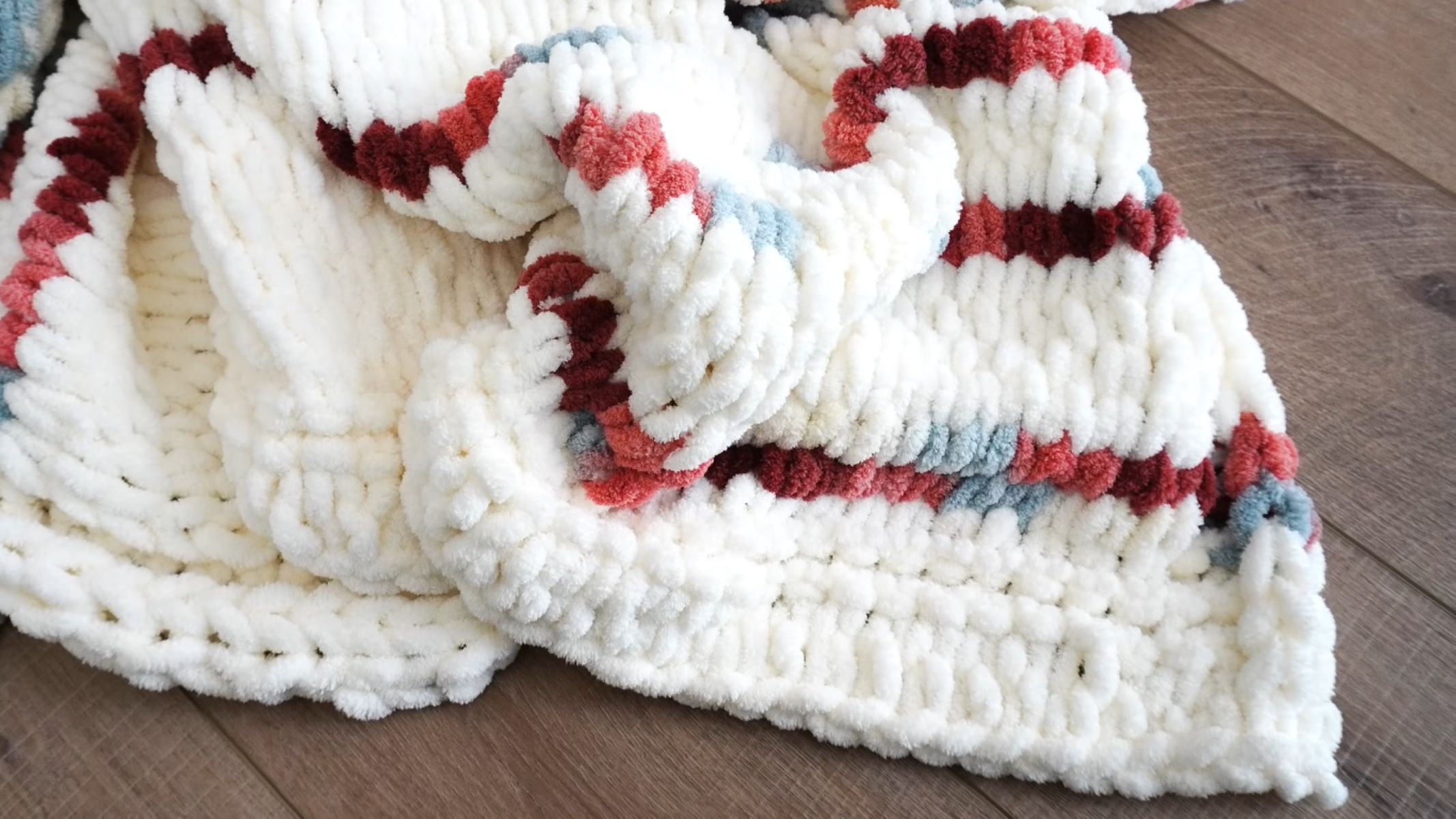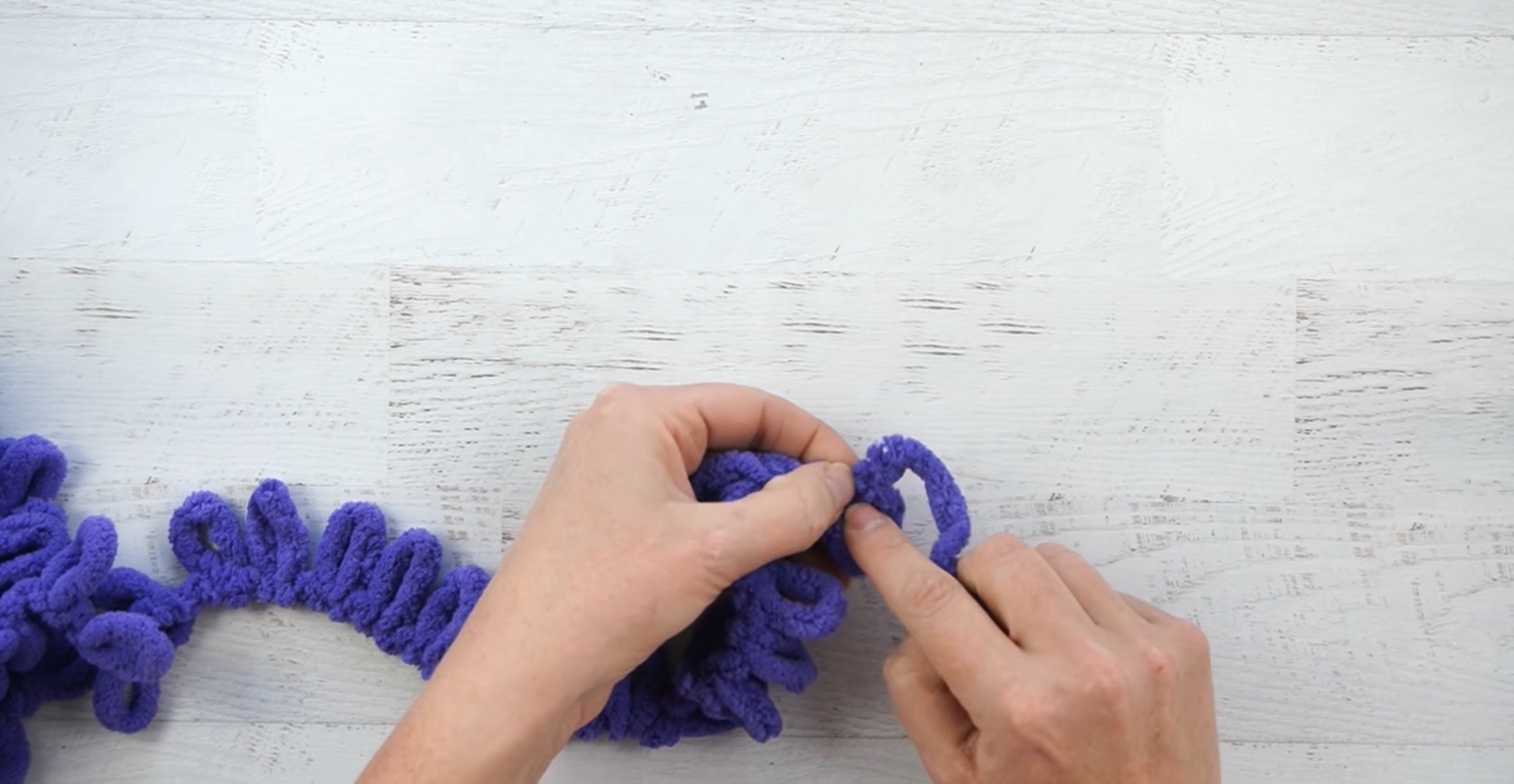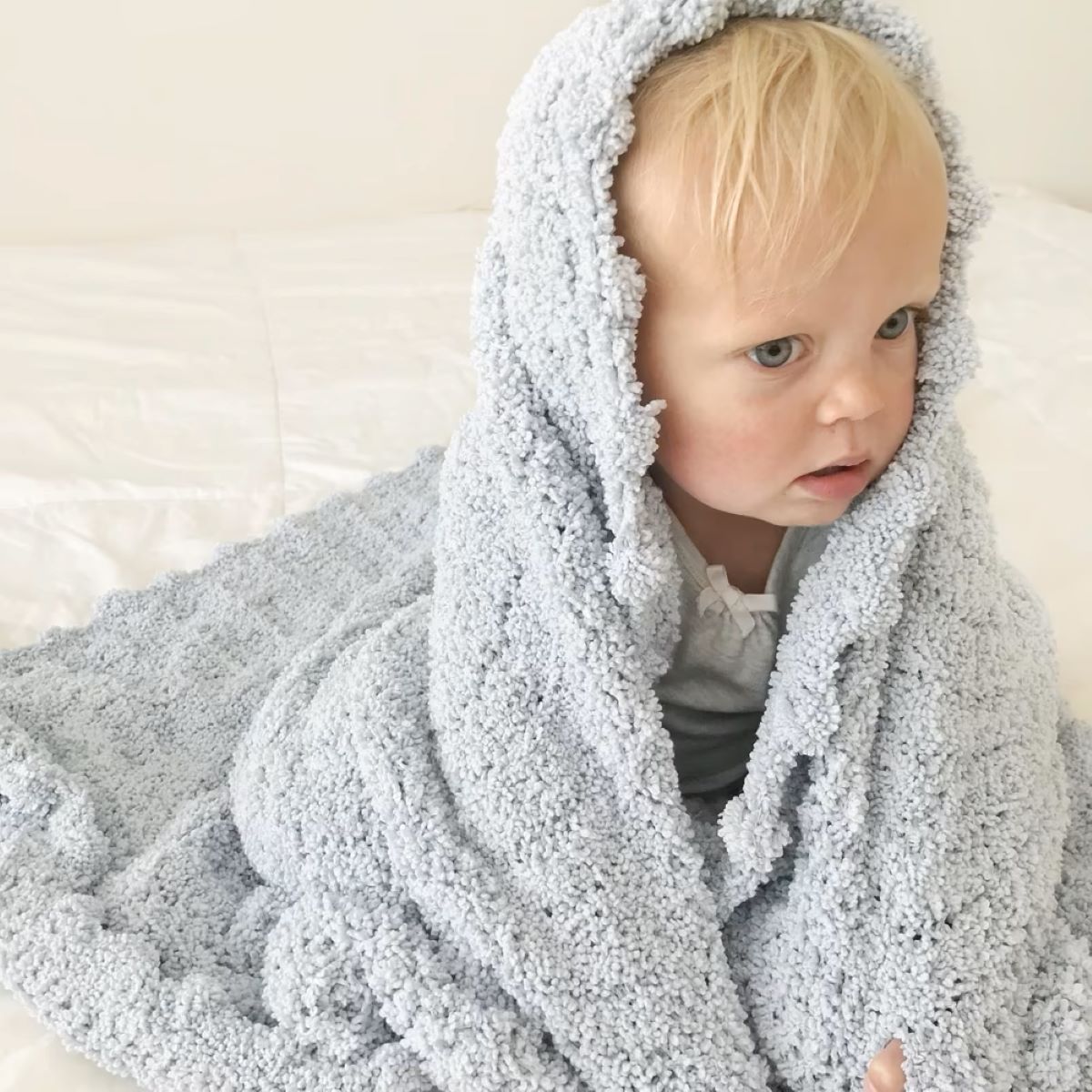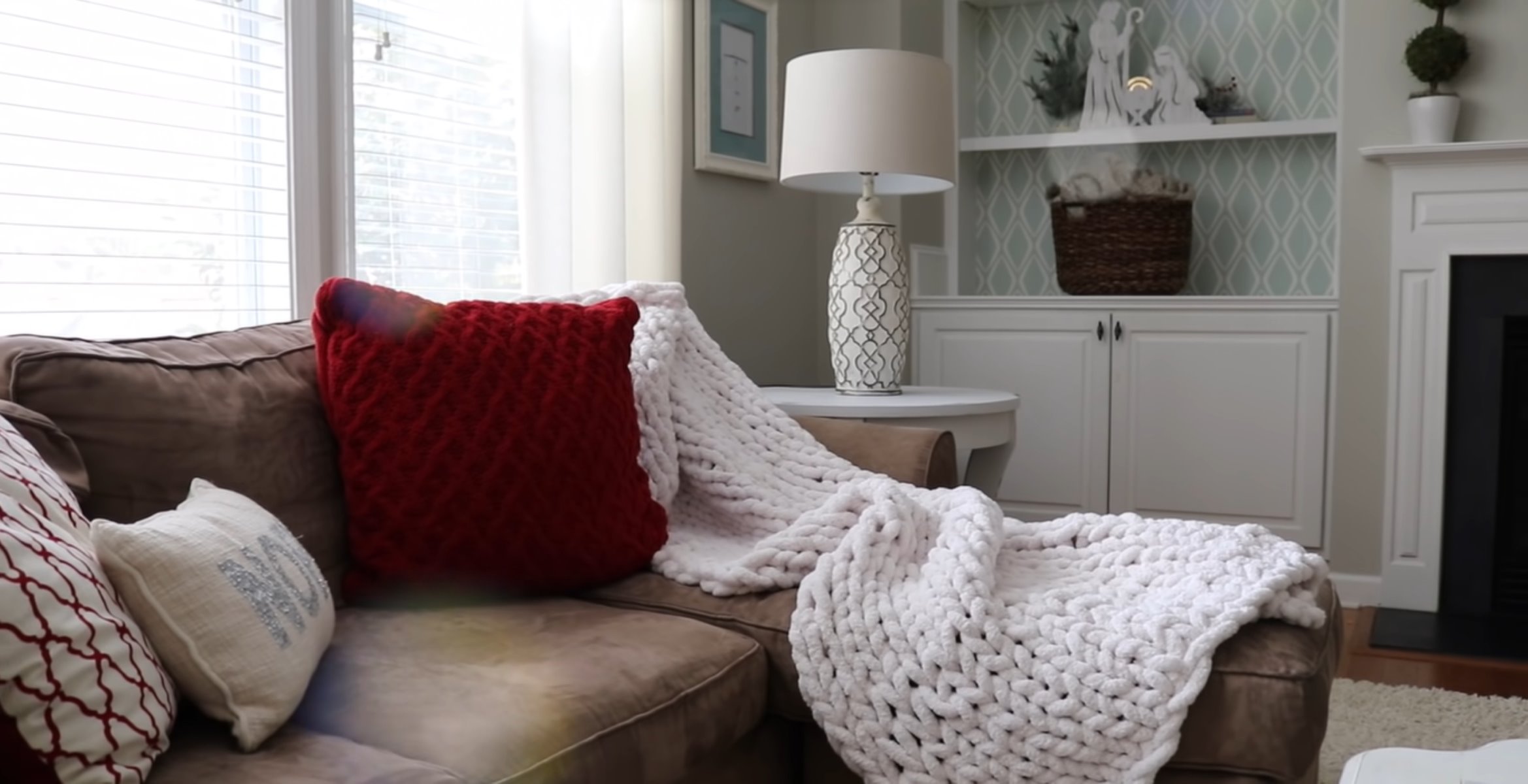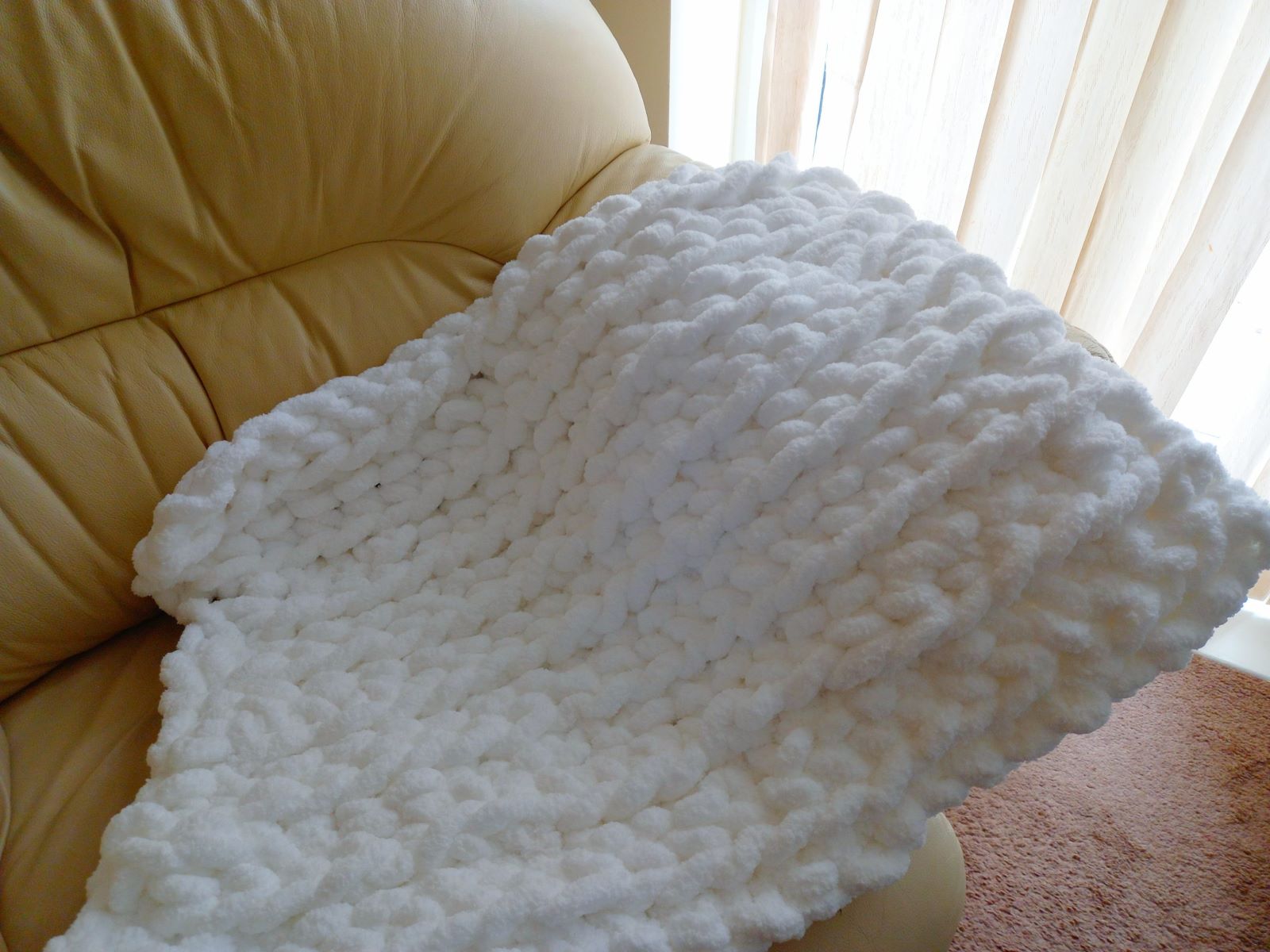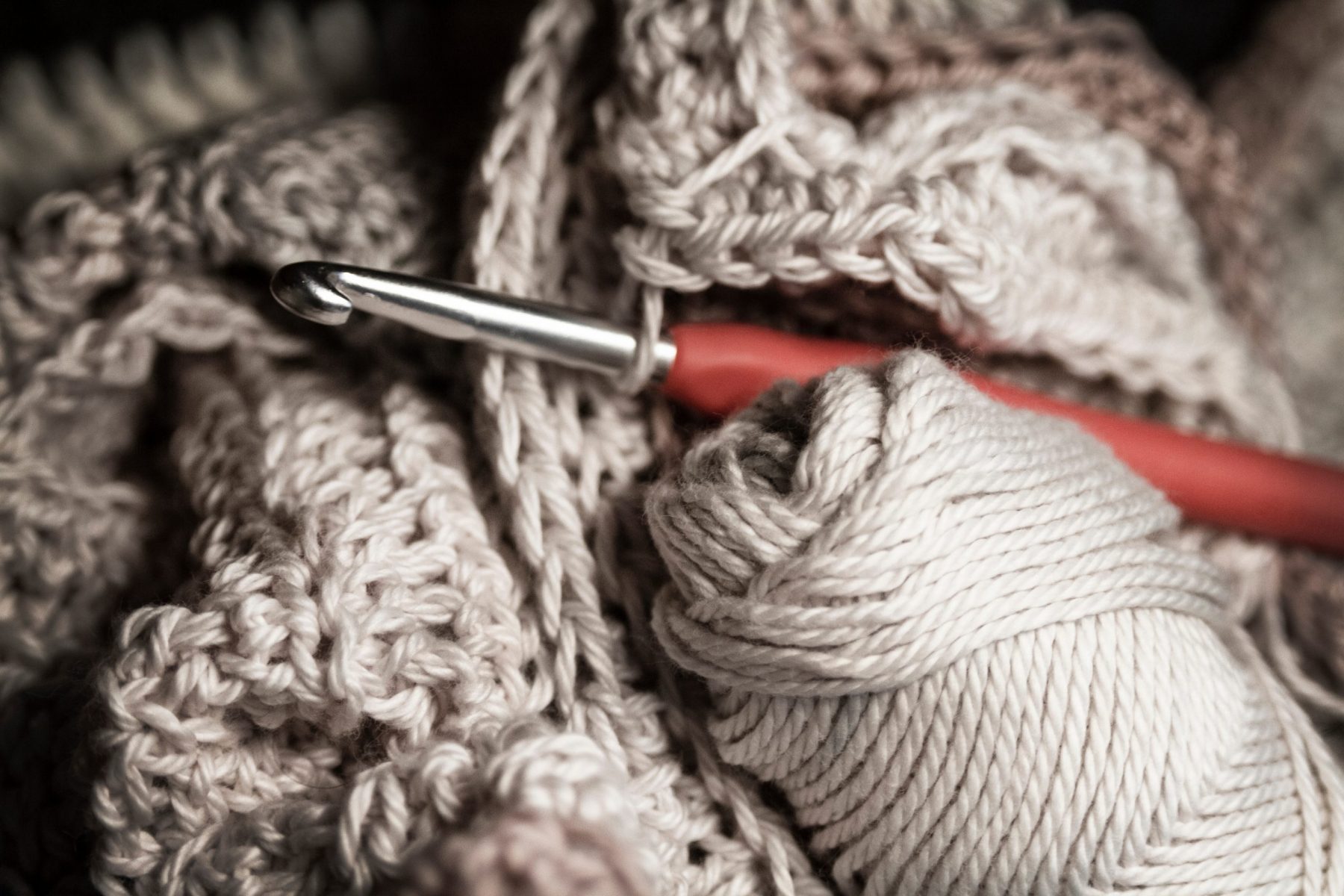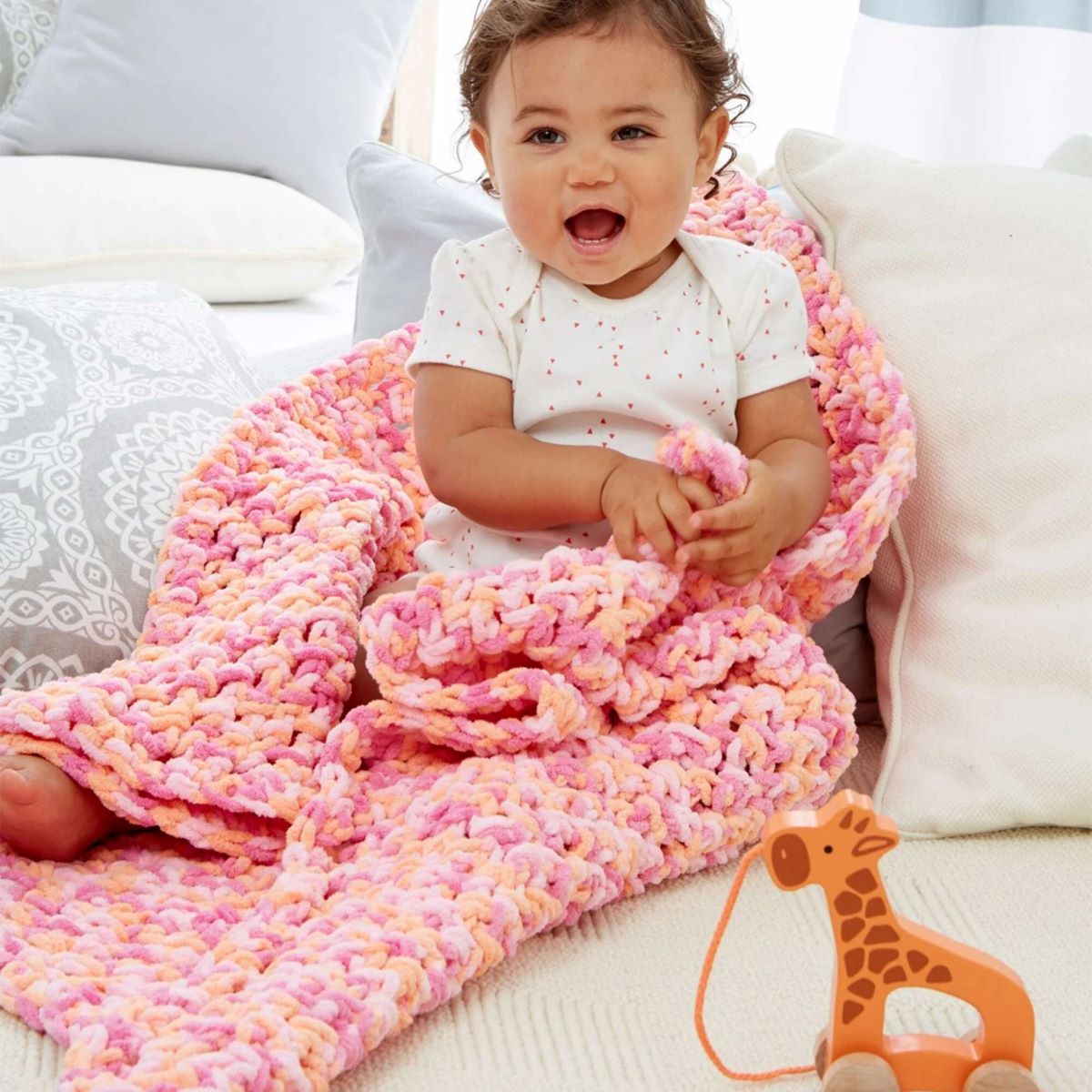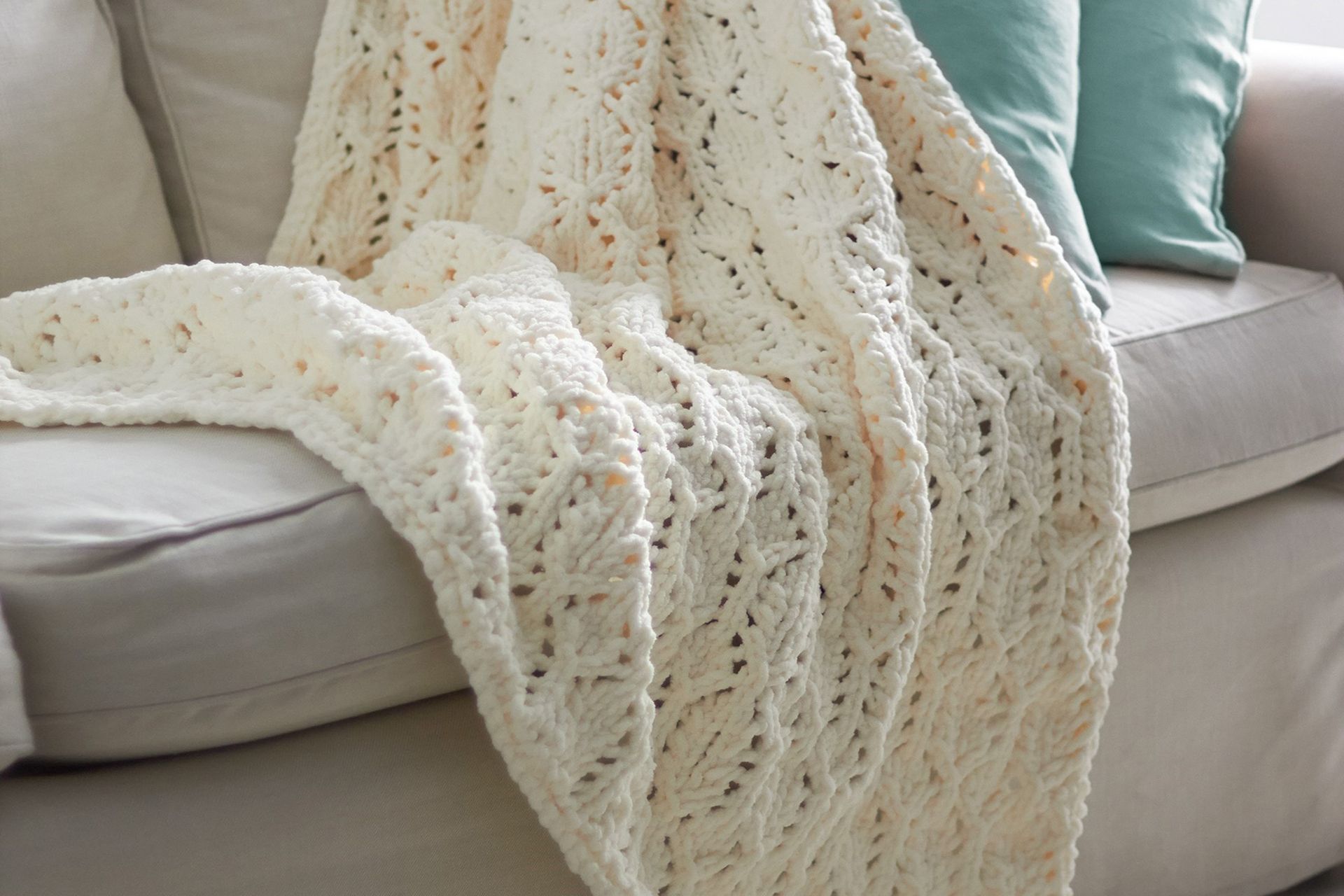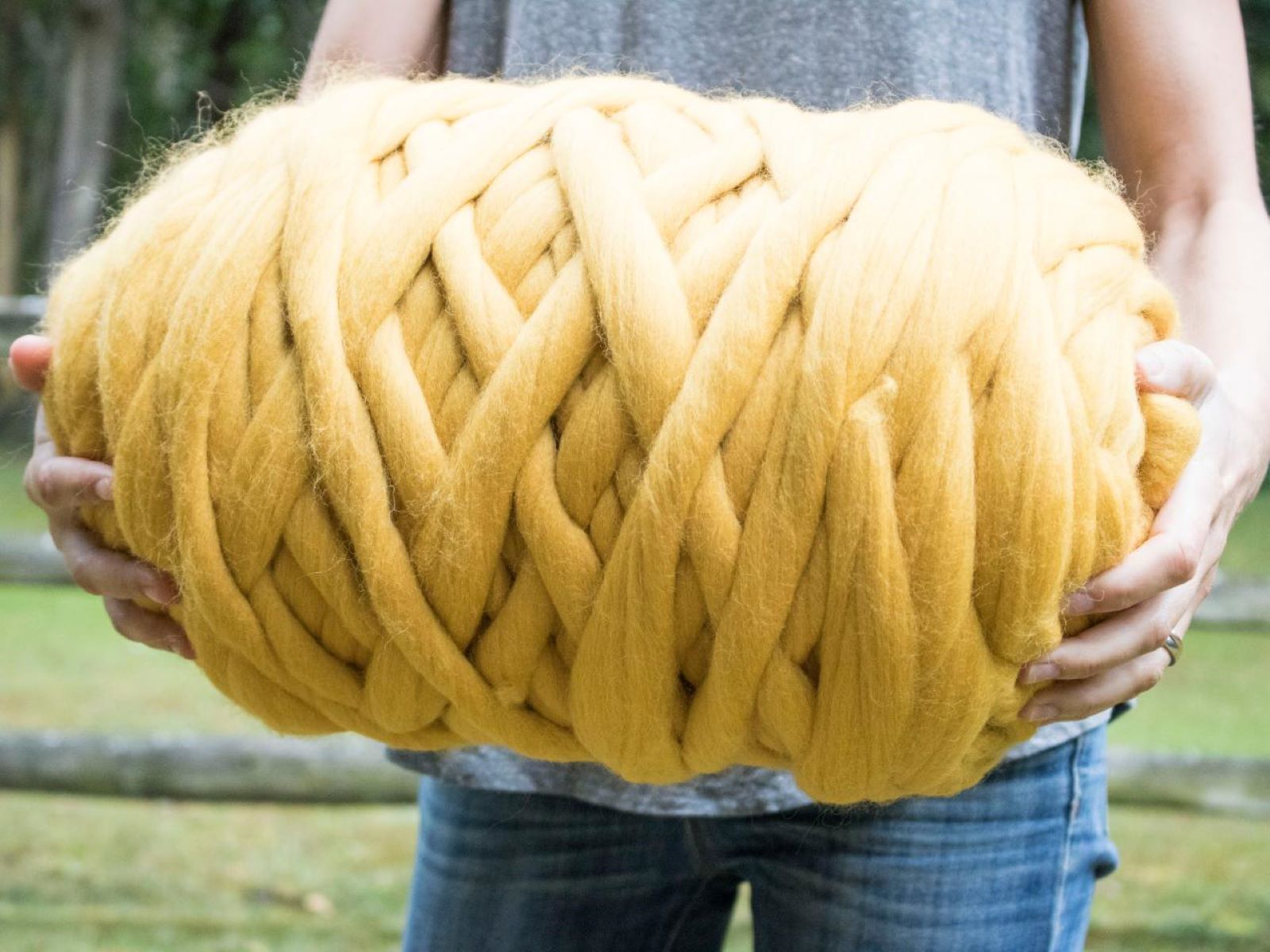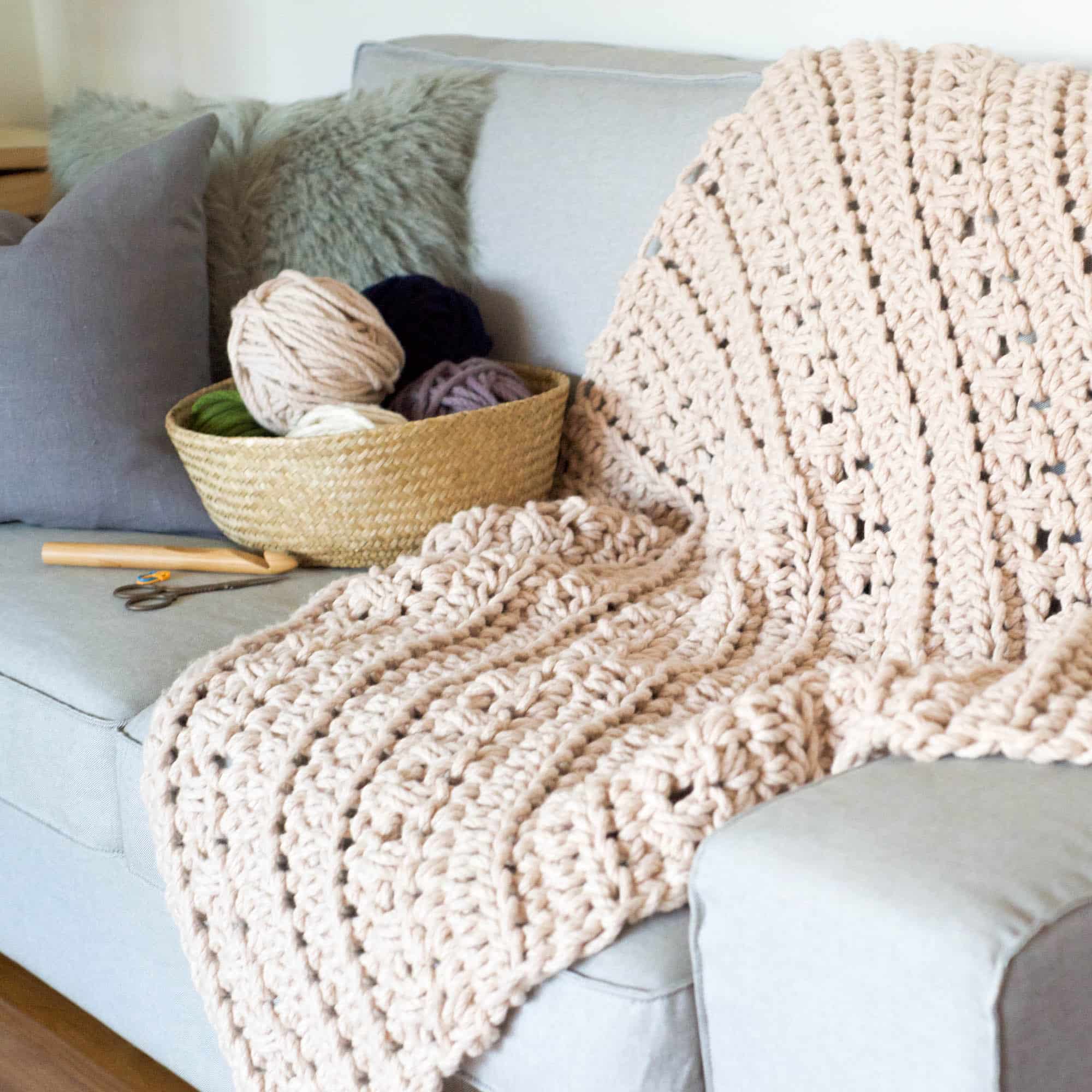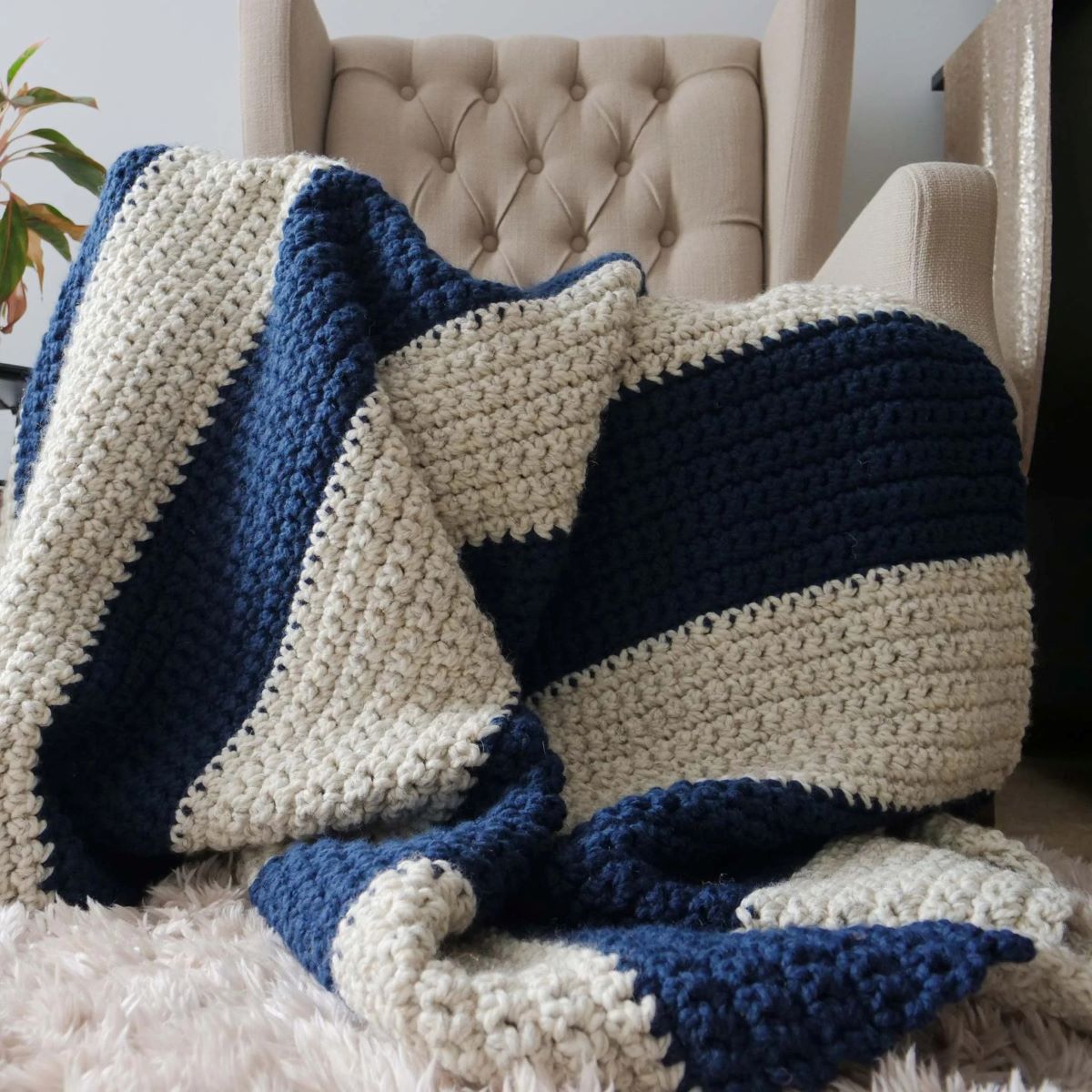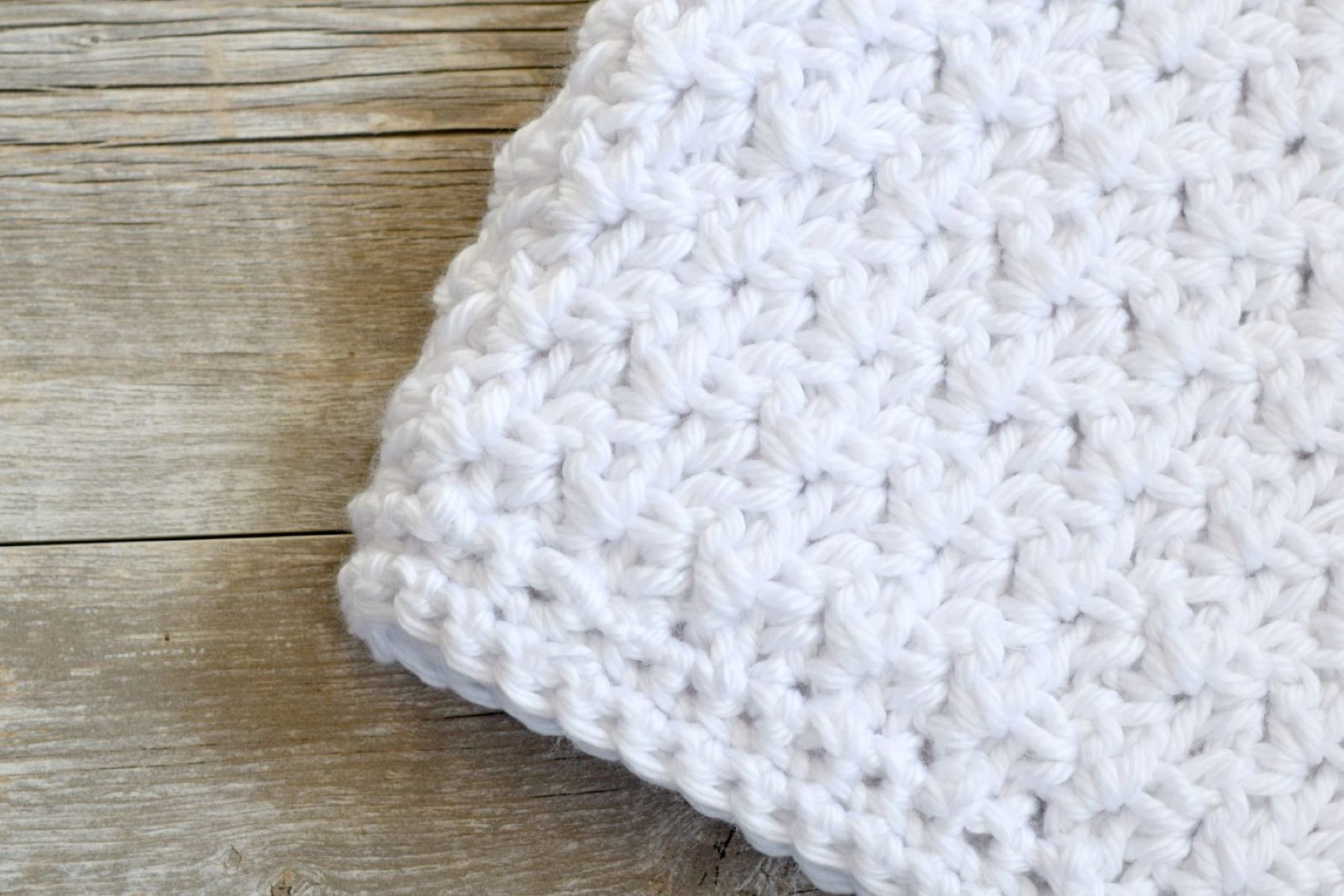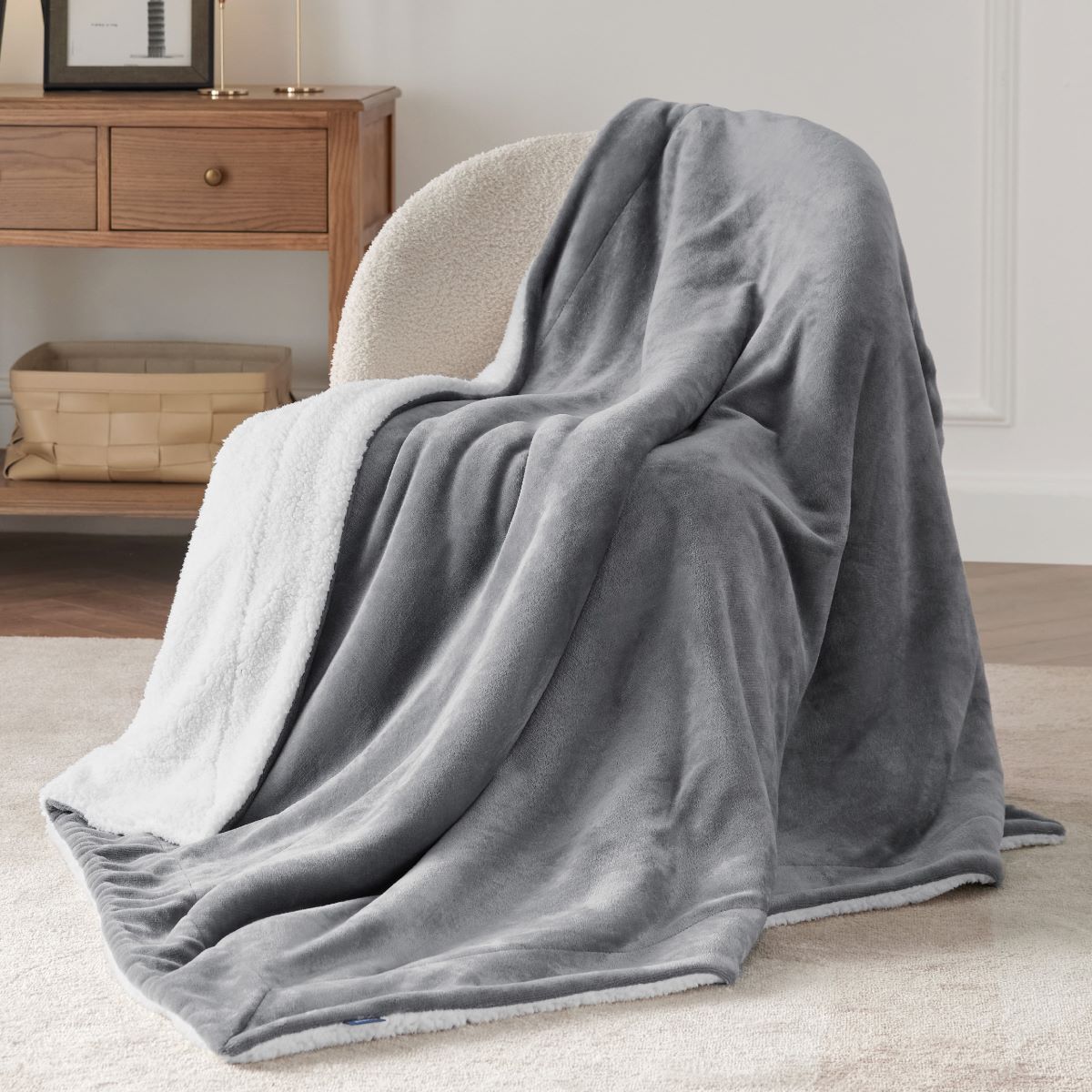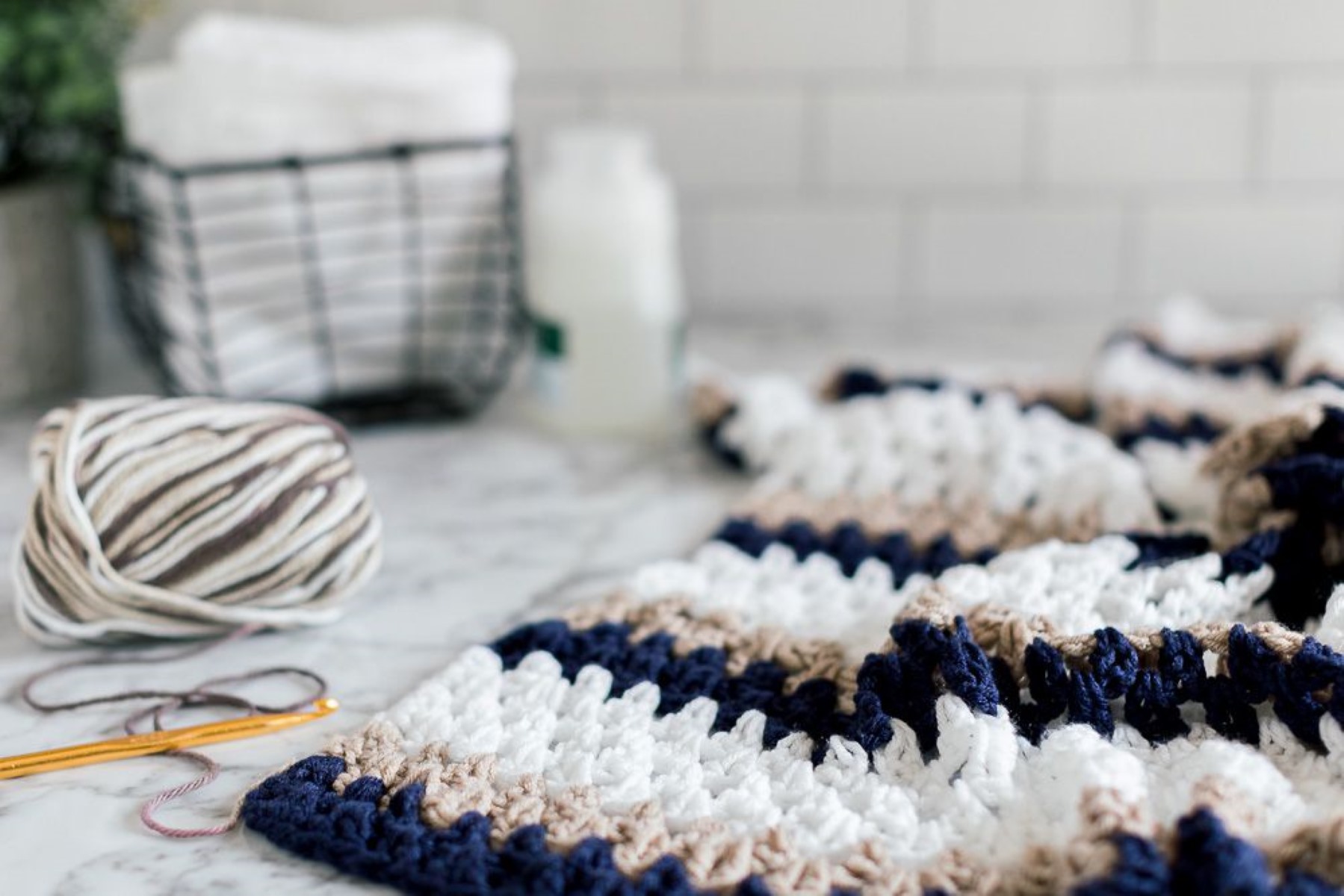

Articles
How Many Skeins Of Yarn For A Blanket
Modified: December 7, 2023
Looking for articles about how many skeins of yarn you need for a blanket? Find out the answer and other helpful tips for your knitting projects.
(Many of the links in this article redirect to a specific reviewed product. Your purchase of these products through affiliate links helps to generate commission for Storables.com, at no extra cost. Learn more)
Introduction
When it comes to creating a cozy and comfortable blanket, one of the most important factors to consider is how many skeins of yarn you will need. Determining the quantity of yarn required for a blanket can often be a puzzling task, especially for those new to knitting or crocheting. However, by taking into account several key factors, you can easily estimate the number of skeins needed for your project.
In this article, we will explore the essential considerations when determining the number of skeins required for a blanket. We will discuss average yardage per skein of yarn, how to calculate the dimensions of your blanket, and tips for adjusting yarn requirements based on stitch patterns, color changes, and more.
So, whether you’re a seasoned yarn enthusiast or a beginner looking to embark on your first blanket project, let’s delve into the world of yarn estimation and discover how to ensure you have just the right amount of yarn to create your perfect blanket.
Key Takeaways:
- Estimating yarn needs for a blanket involves considering factors like yardage per skein, blanket dimensions, stitch pattern, and color changes. Plan ahead and purchase extra yarn to avoid running out mid-project.
- To accurately estimate the number of skeins needed for a blanket, calculate the total yardage required based on dimensions, stitch pattern, and color changes. Utilize online calculators, consult patterns, and create swatches for a more precise estimation.
Read more: How Many Yards Of Yarn For A Blanket
Factors to consider when determining the number of skeins required for a blanket
There are several important factors that play a role in determining how many skeins of yarn you will need for your blanket project. By considering these factors carefully, you can accurately estimate the amount of yarn required, ensuring that you have enough to complete your blanket without running out.
- Yardage per skein: The first factor to consider is the average yardage per skein of yarn. This information can usually be found on the yarn label or product description. It is essential to know the length of yarn in each skein to calculate the total yardage needed for your blanket.
- Dimensions of the blanket: Another crucial factor is the size of the blanket you are planning to make. The larger the dimensions, the more yarn you will need. Consider whether you want to create a small baby blanket, a lap blanket, or a large, cozy throw. The size of your blanket will directly impact the amount of yarn required.
- Stitch pattern or stitch density: The type of stitch pattern or stitch density you choose for your blanket can also affect the amount of yarn needed. Some stitch patterns, such as lace or openwork patterns, require less yarn compared to stitches that create a denser fabric. Take into account the stitch pattern you plan to use and adjust your yarn estimate accordingly.
- Color changes or stripes: If you plan to incorporate color changes or stripes into your blanket, this will also affect the amount of yarn required. Consider how many color changes you intend to make and calculate the additional yardage needed for each color.
By taking these factors into account, you can get a more accurate estimation of the number of skeins required for your blanket project. Keep in mind that it’s always better to have extra yarn on hand rather than running out mid-project, so it’s a good idea to purchase a few extra skeins to be safe.
Average yardage per skein of yarn
When estimating the number of skeins required for a blanket project, it is important to consider the average yardage per skein of yarn. This information can typically be found on the yarn label or in the product description.
The yardage per skein can vary depending on the brand, type, and weight of the yarn. Commonly, yarn comes in skeins with yardage ranging from 100 to 400 yards. However, there are also specialty yarns available with higher or lower yardage per skein.
Knowing the average yardage per skein is crucial for accurately calculating the total yardage needed for your blanket. To calculate the number of skeins required, divide the total yardage needed by the yardage per skein. For instance, if your blanket requires 1200 yards of yarn and each skein contains 200 yards, you would need six skeins of yarn.
It is important to note that when working on a larger blanket, the number of skeins needed may increase. If you are unsure about the yardage per skein or need to adjust your calculations, it is always helpful to consult a yarn shop, patterns, or online resources specific to the yarn you are using.
Additionally, if you are unable to find the yardage per skein information, you can measure the length of a sample piece and calculate the average yardage based on that. This will provide a more accurate estimate of the yardage per skein, eliminating any uncertainties in your calculations.
Remember, measuring the yardage per skein is essential to determine the quantity of yarn required for your blanket project. Being aware of the average yardage will help you make an informed decision when purchasing yarn and ensure that you have enough to complete your project.
Determining the dimensions of your blanket
Before you can accurately estimate the number of skeins of yarn required for your blanket, it’s important to determine the desired dimensions of your project. Consider the intended use of the blanket and the size you want it to be.
The dimensions of your blanket can vary widely depending on your preferences. You might be creating a small baby blanket, a cozy lap blanket, or a large throw for a queen-sized bed. Each option will require a different amount of yarn.
Take some time to decide on the length and width of your blanket. If you have a pattern you’re following, the dimensions may already be specified. Otherwise, you can choose to create a custom size. It’s helpful to measure the area where you plan to use the blanket to get a better idea of the dimensions you need.
When determining the dimensions, keep in mind that the size of your blanket will directly impact the amount of yarn required. Larger blankets will naturally require more yarn, while smaller blankets will require less.
If you’re unsure about the dimensions, there are some standard sizes you can consider. For example, a baby blanket is typically around 30×36 inches, a lap blanket can range from 40×50 to 50×60 inches, and a standard throw blanket is around 50×70 inches.
Deciding on the dimensions of your blanket is an important step towards estimating the amount of yarn you’ll need. By having a clear idea of the size you want to achieve, you can proceed to calculate the appropriate yardage for your project.
Calculating yarn requirements based on blanket size
Once you have determined the dimensions of your blanket, you can proceed to calculate the amount of yarn needed. To estimate the yarn requirements based on the blanket size, follow these steps:
- Convert the dimensions to inches: If you determined the dimensions of your blanket in feet or centimeters, convert them to inches for easier calculations. For example, if your blanket is 4 feet wide and 5 feet long, it would be 48×60 inches.
- Calculate the total square inches: Multiply the width by the length to calculate the total square inches of your blanket. For example, a 48×60-inch blanket would have 2,880 square inches.
- Consider the desired stitch density: The stitch density, or how tight or loose your stitches are, can impact the amount of yarn needed. Generally, a tighter stitch density will require more yarn compared to a looser stitch. Keep this in mind when estimating your yarn requirements.
- Refer to the yarn label for recommended yardage: Check the label on your chosen yarn for the recommended yardage per square inch. This information can be helpful in estimating the total yardage needed for your blanket.
- Calculate the total yardage: Multiply the total square inches of your blanket by the recommended yardage per square inch. For example, if the label recommends 0.01 yards per square inch, a 2,880 square inch blanket would require approximately 28.8 yards of yarn.
Keep in mind that these calculations provide an estimate and may vary based on factors such as stitch pattern, yarn weight, and the tightness of your stitches. It’s always a good idea to have a bit of extra yarn on hand to account for any discrepancies or unexpected changes in your project.
Calculating the yarn requirements based on the blanket size helps you estimate how many skeins of yarn you will need to complete your project. However, it’s important to adjust these calculations based on other factors, such as stitch pattern, color changes, and personal preferences.
When determining how many skeins of yarn you’ll need for a blanket, consider the size of the blanket, the weight of the yarn, and the gauge of your knitting or crochet. It’s always best to buy extra yarn to avoid running out.
Read more: How To Crochet A Blanket With Thick Yarn
Adjusting for stitch pattern or stitch density
When estimating the amount of yarn needed for your blanket, it’s essential to consider the stitch pattern or stitch density you plan to use. Different stitch patterns and stitch densities can affect how much yarn is required for your project.
If you’re working with a stitch pattern that creates a denser fabric, you will likely need more yarn compared to a stitch pattern that creates a more open and airy fabric. The tighter the stitches, the more yarn is used to cover the same area.
Conversely, if you’re using a stitch pattern that creates a looser and more open fabric, you might require less yarn. This is because the yarn will cover a larger area with fewer stitches, reducing the total yardage needed for your blanket.
Another factor to consider when adjusting for stitch pattern or stitch density is the stretchiness of the fabric. If your chosen stitch pattern creates a fabric that tends to stretch significantly, you may want to account for this by adding extra yarn to ensure that your blanket retains its shape and size over time.
Additionally, if you plan to switch between different stitch patterns or create sections with varying densities, you will need to calculate the yarn requirements for each section separately and then add them together to determine the total amount of yarn needed.
It’s worth noting that stitch patterns and densities can vary significantly, even within the same category, so it’s essential to swatch before starting your project. Swatching allows you to get an accurate estimate of the yarn requirements for your specific stitch pattern and stitch density.
By adjusting for the stitch pattern or stitch density you plan to use, you can ensure that you have enough yarn to complete your blanket project without running out or having excess yarn left over.
Accounting for color changes or stripes
If you plan to incorporate color changes or stripes into your blanket project, it’s important to factor in these design elements when estimating the amount of yarn needed. Color changes and stripes can significantly affect the total yardage required for your blanket.
When adding color changes or stripes, you will need to consider two main factors: the number of color changes and the width of each stripe.
Number of color changes: The more color changes you have in your blanket, the more yarn you’ll need. Each new color requires additional yardage to complete the desired sections. Keep in mind that when working with multiple colors, it’s generally a good idea to have a bit of extra yarn for each color to ensure you don’t run out before completing the desired sections.
Width of each stripe: The width of each stripe also influences the total yardage required. Wider stripes will consume more yarn compared to narrower stripes. If you have a specific width in mind for each stripe, you can calculate the yardage needed for each stripe and add them together to determine the total yardage for the color changes or stripes section of your blanket.
It’s important to remember that different colors may have different dye lots or variations in color saturation. If possible, it’s recommended to purchase all the necessary yarn for your color changes or stripes section at once to ensure consistency in color and dye lot.
Additionally, if you’re using multiple colors in your blanket, you may need to account for extra yarn needed to join or carry the yarn along the edges to avoid excessive loose ends or bulky seams.
By considering the number of color changes and the width of each stripe, you can accurately estimate the additional yarn needed for incorporating these design elements into your blanket. Remember to add this extra yardage to your overall yarn estimation to ensure you have enough yarn to complete your project as planned.
Tips for estimating yarn needs
Estimating the amount of yarn needed for a blanket can sometimes be challenging, but here are some helpful tips to ensure you make an accurate estimation:
- Check the pattern: If you are following a pattern for your blanket, carefully read through it to see if it provides any guidelines or recommendations for the amount of yarn needed. Patterns often include yarn requirements based on the size and stitch pattern used.
- Create a swatch: Before starting your project, create a small test swatch using the stitch pattern and yarn you plan to use for your blanket. Measure the length and width of the swatch and calculate the yardage per square inch. Use this information to estimate the total yardage needed based on the dimensions of your blanket.
- Consult a yarn calculator: There are various online yarn calculators available that can help you estimate the amount of yarn needed based on the dimensions of your blanket, stitch pattern, and yarn weight. These calculators can provide a more accurate estimation, especially if you are unsure about the yardage per skein or stitch density.
- Consider the weight of the yarn: Depending on the weight of the yarn, the yardage per skein may vary. Chunky or bulky yarns tend to have fewer yards per skein compared to fingering or sport weight yarns. Take this into account when estimating the number of skeins needed for your blanket.
- Keep track of your progress: As you work on your blanket, regularly measure the length of yarn used. This can help you gauge how much yarn is being used and give you an idea of how many more skeins will be needed to complete the project.
- Buy extra yarn: It’s always better to have more yarn than needed rather than running out in the middle of your project. When estimating the number of skeins, consider purchasing an extra skein or two to account for any variations in gauge, mistakes, or unforeseen adjustments.
- Contemplate the stitch pattern’s yarn usage: Some stitch patterns are more yarn-intensive than others. For example, lacy patterns usually require less yarn compared to dense and textured stitches. Keep this in mind when estimating your yarn needs.
Remember that these tips are meant to assist you in estimating the amount of yarn needed for your blanket. Every project is unique, and it’s best to consider the specific characteristics of your pattern, yarn, and personal preferences to make the most accurate estimation.
By following these tips, you can ensure that you have enough yarn to complete your blanket project without the stress of running out or having excessive leftovers.
Conclusion
Estimating the number of skeins required for a blanket is an important step in ensuring a successful and enjoyable crafting experience. By considering various factors such as average yardage per skein, the dimensions of your blanket, stitch pattern or stitch density, and color changes or stripes, you can make a more accurate assessment of your yarn needs.
Taking the time to calculate the yardage and plan your yarn requirements helps you avoid the frustration of running out of yarn or having excessive leftovers. It allows you to have a smooth and uninterrupted knitting or crocheting journey, resulting in a beautifully finished blanket.
Remember to consult your pattern, create a swatch, and use online yarn calculators to assist you in estimating the yarn needed for your specific project. Additionally, consider purchasing extra skeins of yarn to account for any variations in gauge, mistakes, or unforeseen adjustments.
Whether you’re creating a baby blanket, a cozy lap blanket, or a large throw, having a good estimation of yarn requirements ensures that you can confidently embark on your project and bring your envisioned blanket to life.
So, grab your favorite yarn, get your needles or hook ready, and enjoy the process of crafting a beautiful, warm, and comforting blanket that you’ll cherish for years to come.
Frequently Asked Questions about How Many Skeins Of Yarn For A Blanket
Was this page helpful?
At Storables.com, we guarantee accurate and reliable information. Our content, validated by Expert Board Contributors, is crafted following stringent Editorial Policies. We're committed to providing you with well-researched, expert-backed insights for all your informational needs.
